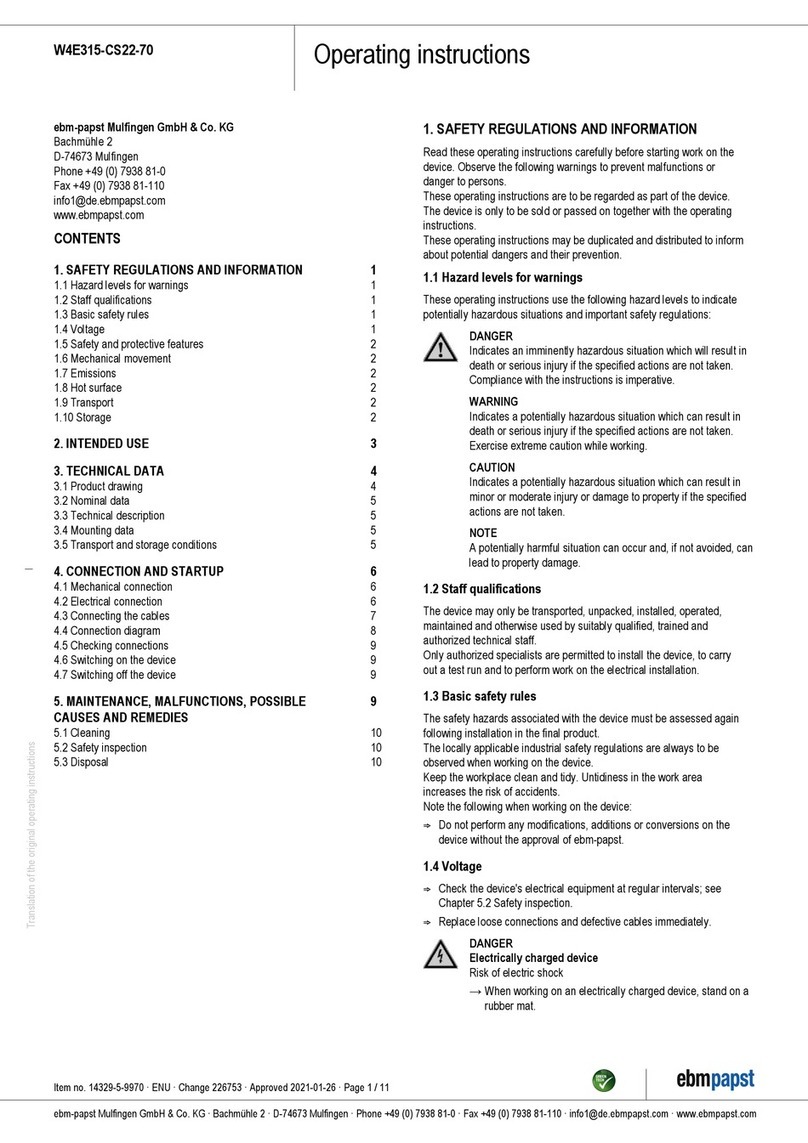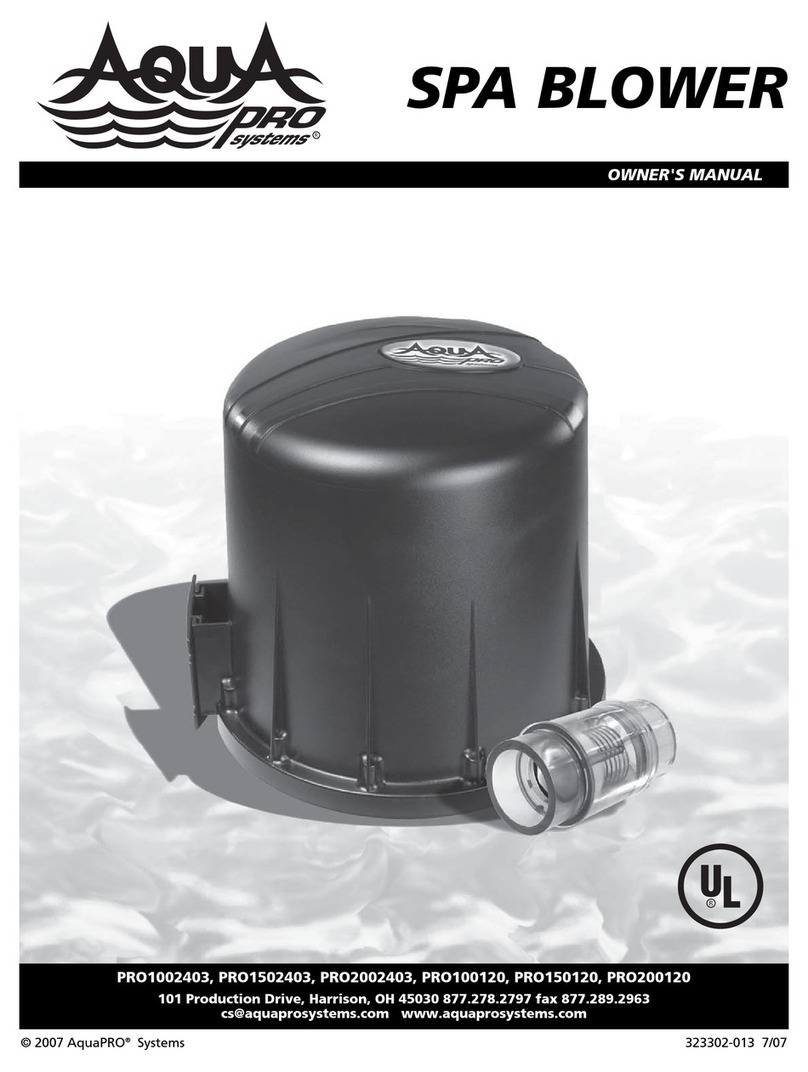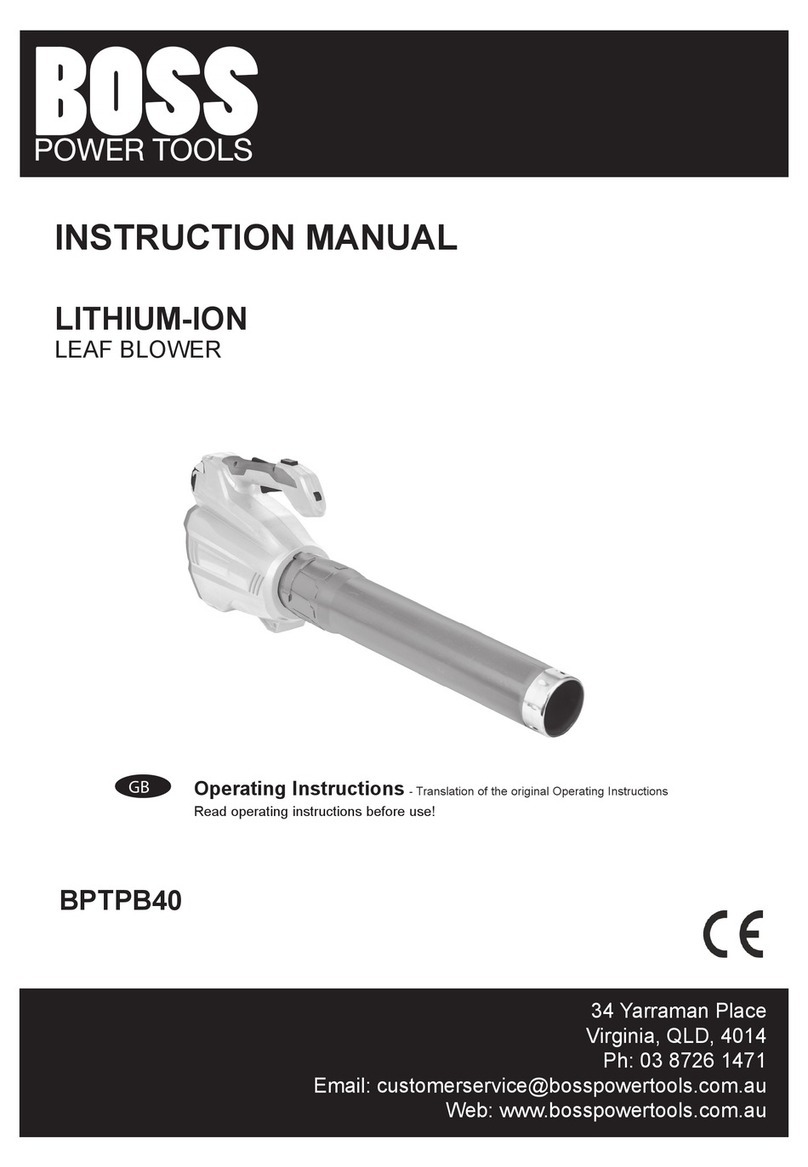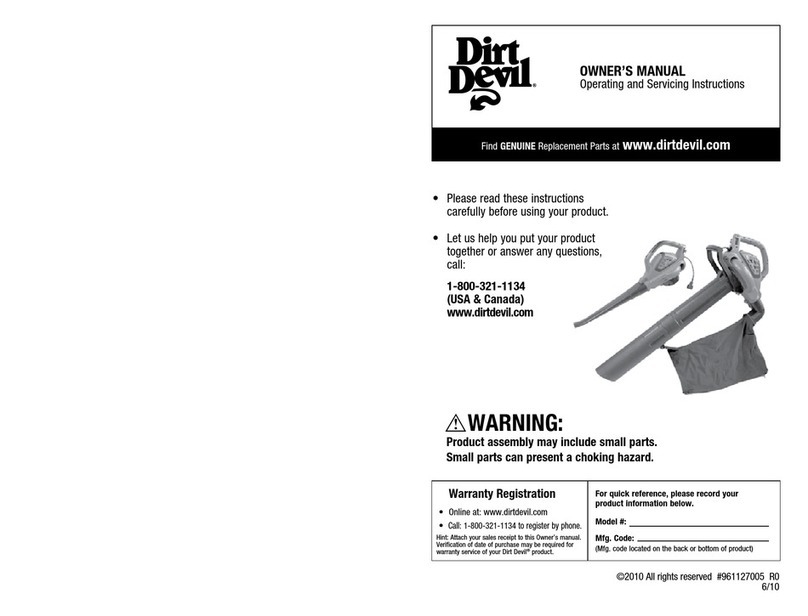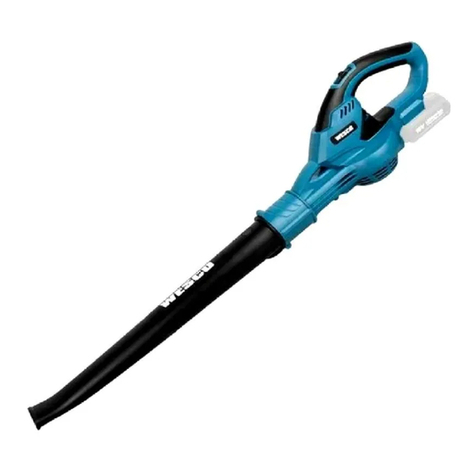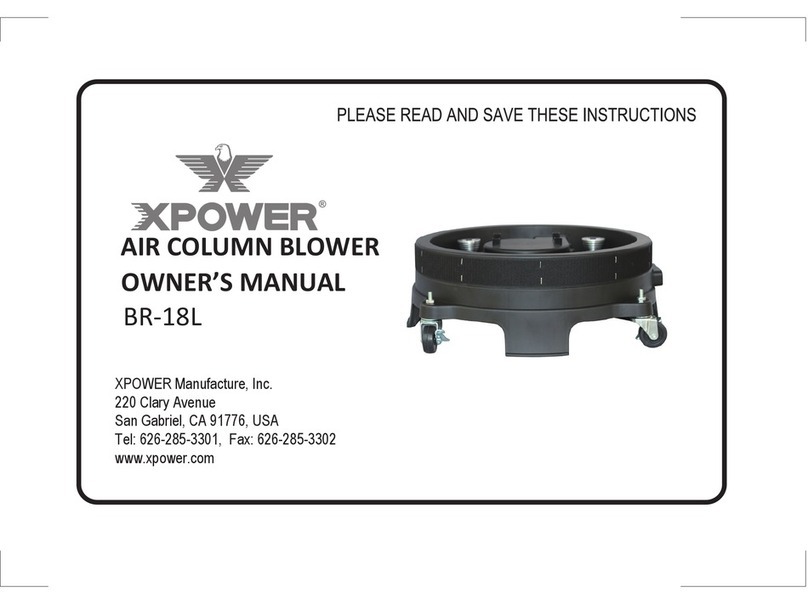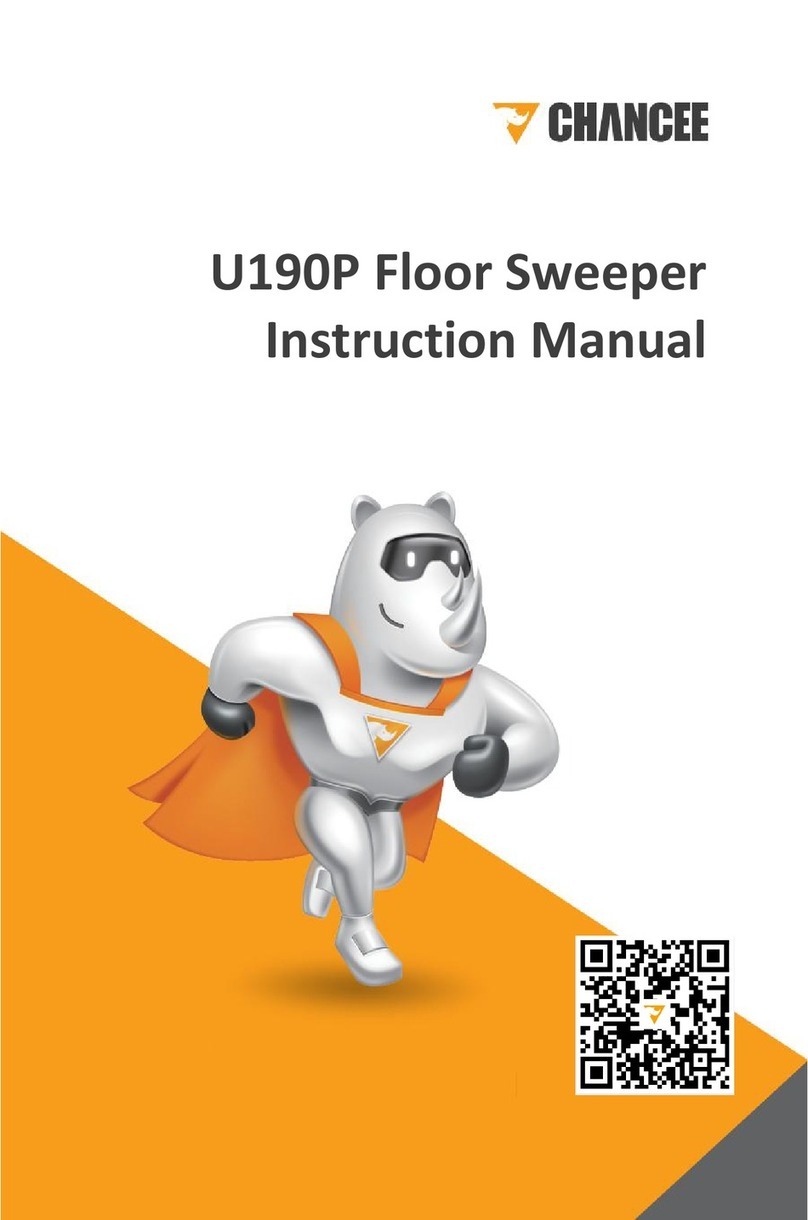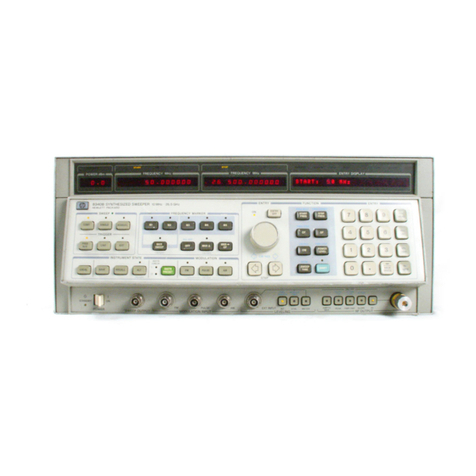Mowox DYM500301 User manual

1
ORIGINAL INSTRUCTIONS
INFORMATION/MANUALS/SERVICE
Model: EBV 40 Li (DYM500301)
2018
Manufacturer:
Ningbo Daye Garden Machinery Co., Ltd.
No. 58 Jinfeng Road, Yuyao, Zheijiang 315403, P.R. China
www.daye-garden.com
Importer:
Daye Europe GmbH
Parkstraße 1 a
66450 Bexbach, Germany
www.mowox.com

2
SERVICE CONTACTS
COUNTRY TELEPHONE EMAIL
AUSTRIA +43 720 230804 [email protected]
SWITZERLAND +41 43 50 888 04 [email protected]
LUXEMBURG +352 27 863004 [email protected]
BELGIUM +32 2 5889602 [email protected]
NETHERLANDS +31 20 8080 732 [email protected]

3
CONTENT
SECTION 1 SYMBOLS MARKED ON THE PRODUCT ……………...…………….4
SECTION 2 GENERAL APPLIANCE SAFETY………..………….………………….5
SECTION 3 PARTS DESCRIPTION………..………….……………….………….….9
SECTION 4 TECHNICAL DATE ................. …………………………………………9
SECTION 5 ASSEMBLY ........................... ………………………………………10
SECTION 6 OPERATION........................... ……………………………………..…12
SECTION 7 MAINTENANCE…………………………………………………...…… 16
SECTION 8 TROUBLESHOOTING………………... ……………….. ……….……16
SECTION 9 ENVIRONMENTALLY FRIENDLY DISPOSAL . ……..….…..……..17
SECTION 10 EC-DECLARATION OF CONFORMITY ……………………………17

4
1. SYMBOLS MARKED ON THE PRODUCT
Accumulator Disposal:
Old accumulators and batteries must not be added to household waste, but should be disposed of in
accordance with the applicable legislation.
Take unusable rechargeable batteries to the dealer’s or community’s battery collection point.
Disposing of the packaging:
The packaging is made of cardboard and separately labelled foil which is also recyclable.
Take these materials to a recycling centre.
Battery packs/batteries:
Li-lon
Do not dispose of batteries into household waste, water or fire. Battery packs/batteries must be
collected, recycled or disposed of in an environmentally -friendly way.
Only for EC countries:
Defective or dead batteries must be recycled according to the directive 2006/66/EC
Read operator's manual
Read the instruction manual before using the appliance.
Keep bystanders away.
Wear eye and ear protection.
Keep hands out of rotation fan.
Do not use this product in the rain or leave outdoors while it is raining.
CE Marking
The product meets demands and regulations set by the European Community.
WEEE Marking
CAUTION! Unusable power tools do not belong to domestic waste. They must be taken
to a communal collecting point for environmentally friendly disposal in accordance with
local regulations.
The charger is intended for indoor use only.

5
2. GENERAL SAFETY RULES
General Power Tool Safety Warnings
WARNING: Read all safety warnings and all instructions. Failure to follow the warnings and instructions
may result in electric shock, fire and/or serious injury. Save all warnings and instructions for future reference.
The term “power tool” in the warnings refers to your mains-operated (corded) power tool or battery operated
(cordless) power tool.
Work area safety
a)Keep work area clean and well lit. Cluttered or dark areas invite accidents.
b)Do not operate power tools in explosive atmospheres, such as in the presence of flammable liquids gases or
dust. Power tools create sparks which may ignite the dust or fumes
c)Keep children and bystanders away while operating a power tool. Distractions can cause you to lose control.
Electrical safety
a) Power tool plugs must match the outlet. Never modify the plug in any way. Do not use any adapter plugs
with earthed (grounded) power tools. Unmodified plugs and matching outlets will reduce risk of electric shock.
b)Avoid body contact with earthed or grounded surfaces, such as pipes, radiators, ranges and refrigerators.
There is an increased risk of electric shock if your body is earthed or grounded.
c)Do not expose power tools to rain or wet conditions. Water entering a power tool will increase the risk of
electric shock.
d) Do not abuse the cord. Never use the cord for carrying, pulling or unplugging the power tool. Keep cord
away from heat, oil, sharp edges and moving parts. Damaged or entangled cords increase the risk of electric
shock
e) When operating a power tool outdoors, use an extension cord suitable for outdoor use. Use of a cord
suitable for out- door use reduces the risk of electric shock.
f) If operating a power tool in a damp location is unavoidable, use a residual current device (RCD) protected
supply. Use of an RCD reduces the risk of electric shock.
Personal safety
a) Stay alert, watch what you are doing and use common sense when operating a power tool. Do not use a
power tool while you are tired or under the influence of drugs, alcohol or medication. A moment of inattention
while operating power tools may result in serious person- al injury.
b) Use personal protective equipment. Always wear eye protection. Protective equipment such as dust mask,
non-skid safety shoes, hard hat, or hearing protection used for appropriate conditions will reduce personal
injuries.
c) Prevent unintentional starting. Ensure the switch is in the off-position before connecting to power source
Noise level marking
Your tool noise is not more than XXdB.

6
and/or battery pack, picking up or carrying the tool. Carrying power tools with your finger on the switch or
plugging power tools that have the switch on may lead to accidents.
d) Remove any adjusting key or wrench before turning the power tool on. A wrench or a key left attached to a
rotating part of the power tool may result in personal injury.
e) Do not overreach. Keep proper footing and balance at all times. This enables better control of the power tool
in unexpected situations.
f) Dress properly. Do not wear loose clothing or jewellery. Keep your hair, clothing and gloves away from
moving parts. Loose clothes, jewellery or long hair can be caught in moving parts.
g) If devices are provided for the connection of dust extraction and collection facilities, ensure these are
connected and properly used. Use of dust collection can reduce dust-related hazards.
Power tool use and care
a) Do not force the power tool. Use the correct power tool for your application. The correct power tool will do
the job better and safer at the rate for which it was designed.
b) Do not use the power tool if the switch does not turn it on and off. Any power tool that cannot be controlled
with the switch is dangerous and must be repaired.
c) Disconnect the plug from the power source and/or the battery pack from the power tool before making any
adjustments, changing accessories, or storing power tools. Such preventive safety measures reduce the risk of
starting the power tool accidentally.
d) Store idle power tools out of the reach of children and do not allow persons unfamiliar with the power tool or
these instructions to operate the power tool. Power tools are dangerous in the hands of untrained users.
e) Maintain power tools. Check for misalignment or binding of moving parts, breakage of parts and any other
condition that may affect the power tool’s operation. If damaged, have the power tool repaired before use.
Many accidents are caused by poorly maintained power tools.
f) Keep cutting tools sharp and clean. Properly maintained cutting tools with sharp cutting edges are less likely
to bind and are easier to control.
g) Use the power tool, accessories and tool bits etc. in accordance with these instructions, taking into account
the working conditions and the work to be performed. Use of the power tool for operations different from those
intended could result in a hazardous situation.
Battery tool use and care
a) Recharge only with the charger specified by the manufacturer. A charger that is suitable for one type of
battery pack may create a risk of fire when used with another battery pack.
b) Use power tools only with specifically designated battery packs. Use of any other battery packs may create
a risk of injury and fire.
c) When battery pack is not in use, keep it away from other metal objects, like paper clips, coins, keys, nails,
screws or other small metal objects, that can make a connection from one terminal to another. Shorting the
battery terminals together may cause burns or a fire.
d) Under abusive conditions, liquid may be ejected from the battery; avoid contact. If contact accidentally
occurs, flush with water. If liquid contacts eyes, additionally seek medical help. Liquid ejected from the battery
may cause irritation or burns.

7
Service
a) Have your power tool serviced by a qualified repair person using only identical replacement parts. This will
ensure that the safety of the power tool is maintained.
Additional Safety instructions for blower vacs
The intended use is described in this manual. The use of any accessory or attachment or performance of any
operation with this appliance other than those recommended in this instruction manual can present a risk of
personal injury and/or damage to property.
●To protect your feet and legs while operating the appliance, always wear heavy duty footwear and long
trousers.
●Always switch off your product, allow the fan to stop and remove the battery from the battery holder:
●You leave your product unattended.
●Checking, adjusting, cleaning or working on your product.
●If the appliance starts to vibrate abnormally.
●Do not place the inlet or outlet of the Vacuum-Blower near eyes or ears when operating. Never blow debris
in the direction of bystanders.
●Do not use in the rain or leave outdoors while it is raining.
●Do not cross gravel paths or roads whilst your product is switched on during blow mode. Walk, never run.
●Do not place your unit down on gravel while it is switched on.
●Always be sure of your footing, particularly on slopes. Do not overreach and keep your balance at all times.
●Do not place any objects into the openings. Never use if the openings are blocked-keep free of hair, lint,
dust and anything that may reduce the airflow.
Warning! Always use your product in the manner outlined in this manual. Your product is designed to be
used in an upright mode and if it is used in any other way it may result in injury,
Never run your product whilst lying on its side or upside down.
●The operator or user is responsible for accidents or hazards occurring to other people or their property.
●Do not use solvents or cleaning fluids to clean your product. Use a blunt scraper to remove grass and dirt.
●Keep all nuts bolts and screws tight to make sure that the appliance is in a safe working condition.
Additional safety warnings
1. This tool is not intended for use by persons (including children) with reduced physical, sensory or mental
capabilities, or lack of experience and knowledge, unless they have been given supervision or instruction
concerning use of the appliance by a person responsible for their safety.
Children should be supervised to ensure that they do not play with the appliance.
2. When working with the machine, always hold it firmly with both hands and provide for a secure stance. The
power tool is guided more secure with both hands.
3. Always ensure all handles and guards are fitted when using the machine. Never at- tempt to use an
incomplete machine or one fitted with an unauthorized modification.
4. Wait until the machine has come to a stand- still before placing it down.
5. Do not open the battery. Danger of short circuiting. Protect the battery against heat, e. g., also against
continuous sun irradiation and fire. There is danger of explosion.
6. In case of damage and improper use of the battery, vapours may be emitted. Provide for fresh air and seek
medical help in case of complaints. The vapours can irritate the respiratory system.

8
7. When the battery is defective, liquid can escape and come into contact with adjacent components. Check
any parts concerned. Clean such parts or replace them, if required.
8. Use the battery only in conjunction with your power tool. This measure alone protects the battery against
dangerous overload.
Safety Warnings for battery chargers
1. Keep the battery charger away from rain or moisture. Penetration of water in the battery charger increases
the risk of an electric shock.
2. Do not charge other batteries. The battery charger is suitable only for charging lithium ion batteries within the
listed voltage range. Otherwise there is danger of fire and explosion.
3. Keep the battery charger clean. Contamination can lead to danger of an electric shock.
4. Before each use, check the battery charger, cable and plug. If damage is detected, do not use the battery
charger. Never open the battery charger yourself. Have repairs per- formed only by a qualified technician and
only using original spare parts. Damaged battery chargers, cables and plugs increase the risk of an electric
shock.
5. Do not operate the battery charger on easily inflammable surfaces (e. g., paper, textiles, etc.) or
surroundings. The heating of the battery charger during the charging process can pose a fire hazard.
6. Children should be supervised to ensure that they do not play with the battery charger.

9
3.PARTS DESCRIPTION
Fig. 1A
Fig. 1B
1.Blow tube 2. Power selector 3. On/Off switch 4. Battery
5. Handle 6. Vac tube 7. Fan cover 8. Collection bag
4.TECHNICAL DATA
Model: EBV 40 Li (DYM500301)
Voltage 40Vdc
1
3
2 4
5
6
7
8

10
No Load Speed 13000RPM
Air Volume 6.00 m3/min(Blower)
9.63 m3/min (Vacuum)
Weight (Blower) 3.13kg
Weight (Vacuum) 4.30kg
Battery Lithium-ion
Battery Lithium-ion
Model
number
BA72E(DYMA72E) BA81(DYMA81) BA84(DYMA84) BA151
(DYMA151)
BA154
(DYMA154)
Rated
voltage
40Vd.c. 40Vd.c. 40Vd.c. 40Vd.c. 40Vd.c.
Capacity 144Wh 90Wh 144Wh 90Wh 144Wh
Number of
battery
20pcs 10pcs 20pcs 10pcs 20pcs
Battery
charger
Model
number
BC73E(DYMA73E) BC82(DYMA82) BC83(DYMA83) BC85(DYMA85)
Input 220-240VAC,50Hz,1A 220-240VAC,50Hz,0.6A 220-240VAC,50Hz,1A 220-240VAC,50Hz,2A
Output 40Vd.c,2A 40Vd.c.,1A 40Vd.c.,2A 40Vd.c.,4A
Allowable
charging
temperature
range
0-50 0-50 0-50 0-50
Sound pressure level at the
operator’s position:
89.3 dB(A) K=3dB(A)
Measured sound power
level:
98.2 dB(A) K=2.56dB(A)
Guaranteed Sound power
level:
101 dB(A)
Vibration: 4.38m/s² K=1.5 m/s²
5.ASSEMBLY

11
Warning! Before assembly, make sure that the appliance is switched off and the battery is removed.
Warning! Always wear protective gloves when working with your cordless Vacuum-Blower.
5.1 Vac tube assembly
The vac tube must be assembled before use.
●Align the latches on the side of the vac tubes. (Fig.2A/ Fig.2B/ Fig.2C)
●Push the vac tube firmly into each other until the latches click into place. (Fig.2D/ Fig.2E)
Note! The tubes should not be separated once assembled.
Fig.2A Fig.2B Fig.2C
Fig.2D Fig.2E
5.2 Fitting and removing the battery
●To fit the battery, line it up with the battery holder on the tool. Slide the battery into the battery holder and
push until the battery snaps into place. (Fig.3A/Fig.3B)
●To remove the battery, push the release button while at the same time pulling the battery out of the battery
holder. (Fig.3C/Fig.3D)

12
Fig.3A Fig.3B
Fig.3C Fig.3D
6.OPERATION
WARNING: Let the tool work at its own pace. Do not overload.
Switching on and off
WARNING: Use both hands to grip the product firmly when switching on.
●To switch the appliance on, press the on/off switch to position “I“. (Fig.4A)
●To switch the appliance off, press the on/off switch to position “O“. (Fig.4B)
Fig.4A Fig.4B
Select power level
The power selection feature is located on the tool handle. It allows you to optimize the tool’s performance and
boost the power from level one to level five as needed (Fig.5A).

13
Turn the power selector backward from “5” to “1” to decrease the blower vac power (Fig.5B)
Turn the power selector forward from “1” to “5” to increase the blower vac power (Fig.5C)
(Most vacuuming tasks require max power)
Fig.5A Fig.5B
Using your product
WARNING: When using as a blower or vacuum, always wear safety glasses. If using in dusty conditions,
wear a filter mask as well.
WARNING: Switch off your product, allow the fan to stop and remove the battery before carrying out any
adjustment, servicing or maintenance.
Blow mode
●Align the blow tube with the Vacuum-Blower body (Fig.6A).
●Push the tube into the Vacuum-Blower body until the lock engage tightly with the blow tube. (Fig.6B/Fig.6C)
●Push the fan cover into the Vacuum-Blower body, close the release button until it engages tightly with the
Vacuum-Blower body. (Fig.6D/Fig.6E/Fig.6F).
●Hold the blow tube approximately 180 mm above the ground, switch on the appliance and using a sweeping
motion from side to side, and advance slowly keeping the accumulated debris/leaves in front of you (Fig.6G).
●Once you have blown the debris/leaves into a pile, you can convert to vacuum mode to collect the debris.
WARNING: Never operate in Blow mode without the blow tube and fan cover firmly in place.

14
Fig.6A Fig.6B Fig.6C
Fig.6D Fig.6E Fig.6F
Fig.6G
Vacuum mode
Note: For vacuuming, the collection bag must be fitted.
●Press down the lock button and remove the blow tube (Fig.7A/Fig.7B).
●Remove the fan cover by pressing the release button (Fig.7C/Fig.7D).
●Align the tabs of the vac tube with the Vacuum-Blower body, close the release button until it engages tightly
with the Vacuum-Blower body. (Fig.7E/ Fig.7F/ Fig.7G/ Fig.7H).
●Align the collection bag tube with the Vacuum-Blower body, push the tube onto the Vacuum-Blower body
until the lock engages tightly with the collection bag tube (Fig.7I/Fig.7J/Fig.7K). Attach the collection bag clip to
the collection bag hook on the bottom of the Vacuum-Blower body (Fig. 7L/Fig.7M/Fig.7N)
●Position the vac tube slightly above the debris/leaves. Switch on the appliance and use a sweeping motion,
the debris/leaves will be sucked up the tube, shredded and thrown into the collection bag (Fig.7O).
●As the bag fills, the power of the suction will decrease, switch off the appliance and unplug battery.
●Unzip the bag to empty the contents before continuing to operate. (Fig.7P/Fig.7Q)
●After operating, removing the blow tube, the collection bag tube or Vac tube
●To disconnect the blow tube or the collection bag tube, press the lock button and pull the tube off. Remove
the Vac tube by pressing the release button. Making sure that the tube does not fall to the ground.

15
WARNING: Never remove the collection bag without first turning off and removing the battery from the
appliance.
NOTE: If the suction decreases and the bag is not full or the unit comes to a stop during use, the
vacuum tube is probably clogged with debris. Turn off and remove the battery from the vacuum and clear the
tube before continuing. Check the tubes for blockages and clear as required. Remove the fan cover and check
the fan for blockages, clear as required (do not use any metal implements to clear any blockage).
Fig.7A Fig.7B Fig.7C
Fig.7D Fig.7E Fig.7F
Fig.7G Fig.7H Fig.7I

16
Fig.7J Fig.7K Fig.7L
Fig.7M Fig.7N Fig.7O
Fig.7P Fig.7Q
7.MAINTENANCE
Your appliance has been designed to operate over a long period of time with a minimum of maintenance.
Continuous satisfactory operation depends upon proper appliance care and regular cleaning.
●Switch off and unplug the appliance/tool.
●Or switch off and remove the battery from the appliance/tool if the appliance/tool has a separate battery
pack.
●Or run the battery down completely if it is integral and then switch off.
●Unplug the charger before cleaning it. Your charger does not require any maintenance apart from regular
cleaning.

17
●Regularly clean the ventilation slots in your appliance/tool and charger using a soft brush or dry cloth.
●Regularly clean the motor housing using a damp cloth. Do not use any abrasive or solvent-based cleaner.
●Keep the appliance clean and dry.
8. TROUBLESHOOTING
PROBLEM PROBABLE CAUSE CORRECTIVE ACTION
Unit will not
blow or mulch
Bag full Empty the bag
Blocked tube Clear the blockage.
Blocked impeller Clear the blockage.
Battery is not charged Charge the battery pack according to the instruction
including with your model.
Unit will not
start
Battery is not secure To secure the battery pack, make sure the latches on
the top of the battery pack snap into place.
Battery is not charged Charge the battery pack according to the instruction
including with your model.
Power/speed switch is in the
OFF position
Press the on/off switch
Defective power switch Call service centre
intake cover is not closed Ensure that cover is fully closed
9. ENVIRONMENTALLY FRIENDLY DISPOSAL
According to EU directive 2012/19/EU on electric and electronic equipment and its
implementation into national law, all electric tools must be separately collected and
environmentally friendly recycled. Alternative disposal: If the owner of the power tool does not
return the tool to the manufacturer, he is responsible for proper disposal at a designated
collection point that prepares the device for recycling according to national recycling laws and regulations.
This does not include accessories and tools without electric or electronic components.
10. EC-DECLARATION OF CONFORMITY
EC Declaration of Conformity
We herewith declare, Ningbo Daye Garden Machinery Co., Ltd.
No.58 Jinfeng Road, Yuyao, Zhejiang 315403, P. R. China
That the following machine complies with the appropriate basic safety and health requirements

18
of the EC Directive based on its design and type, as brought into circulation by us.
In case of alteration of the machine, not agreed upon by us, this declaration will lose its validity
Machine Description: Cordless Blower Vac
Machine Type: EBV 40 Li (DYM500301)
Rated voltage/power 40Vdc
Measured sound power level: 98.2 dB(A)
Guaranteed sound power
level:
101dB(A)
Notified Body for EC Directive 2000/14/EC:0036
TÜV Süd Industrie Service GmbH
Westendstrasse 199, 80686 München, Deutschland
Applicable EC Directives EC Machinery Directive:2006/42/EC
EC Directive of Electromagnetic Compatibility: 2014/30/EU
EC Directive of noise emission: 2000/14/EC
Applicable Harmonized
Standards
EN 60745-1 EN 12100
EN 55014-1 EN 55014-2
Authorized Signature/Date
, 2018.01.06
Title of Signatory General Manager
Name and address of the
person authorized to compile
the technical file
Ningbo Daye Garden Machinery Co., Ltd.
No. 58 Jinfeng Road, Yuyao, Zhejiang 315403, P. R. China
This manual suits for next models
1
Table of contents
Popular Blower manuals by other brands
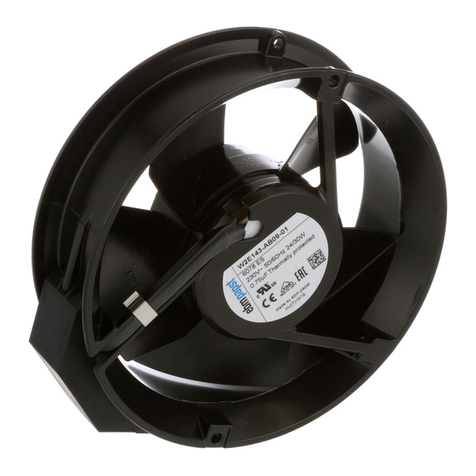
Ebmpapst
Ebmpapst W2E143-AB09-01 operating instructions
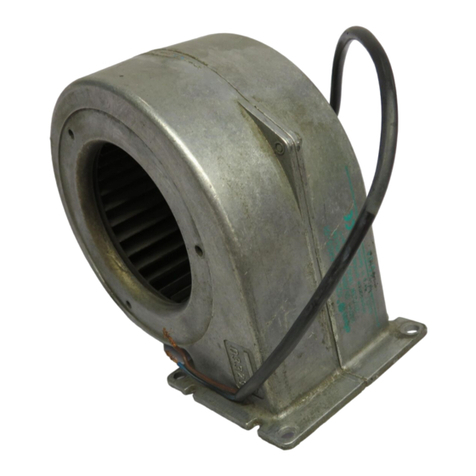
Ebmpapst
Ebmpapst G2S085-AA03-01 operating instructions
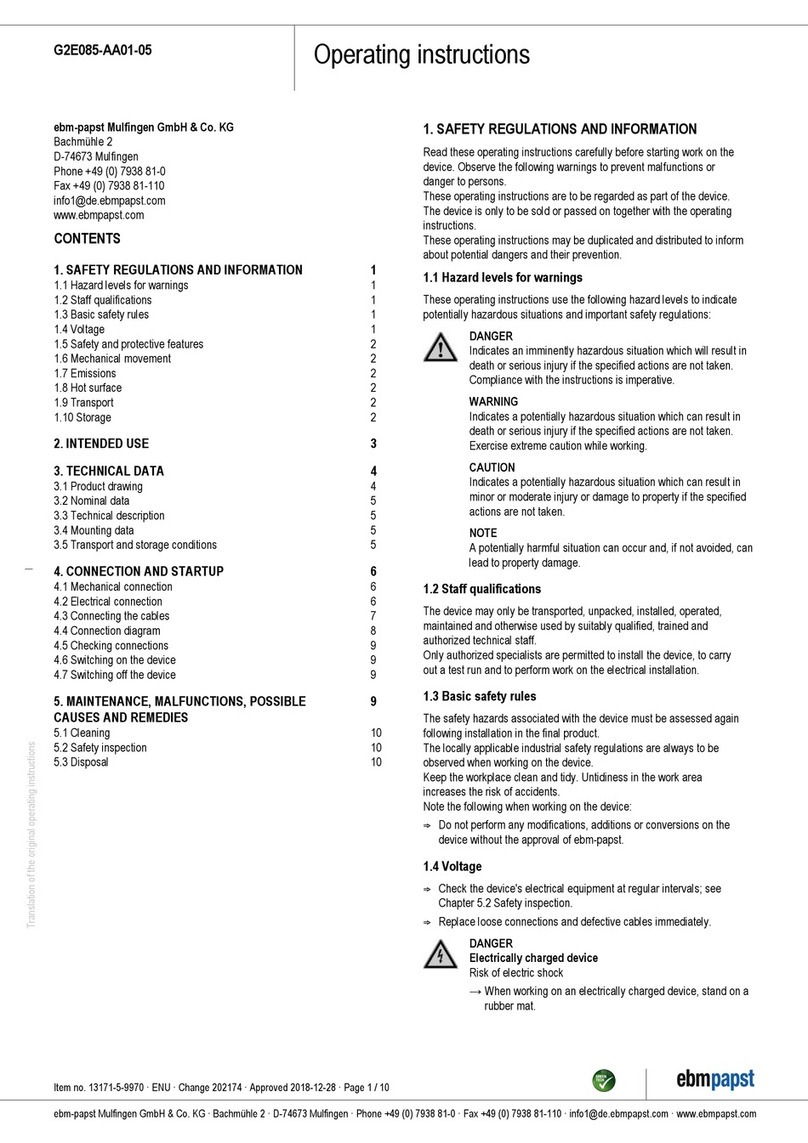
Ebmpapst
Ebmpapst G2E085-AA01-05 operating instructions
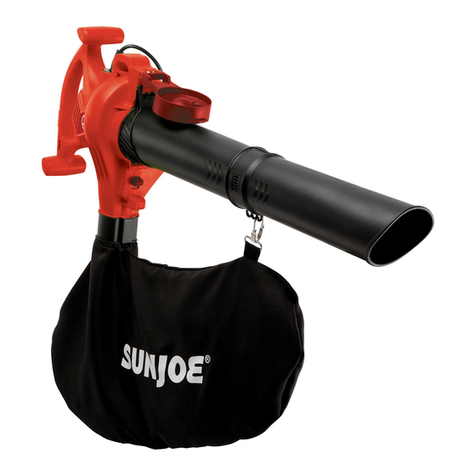
sunjoe
sunjoe SBJ603E Operator's manual

Ebmpapst
Ebmpapst D4E160-DA01-22 operating instructions

FLORABEST
FLORABEST FLB 3000 A1 translation of original operation manual

